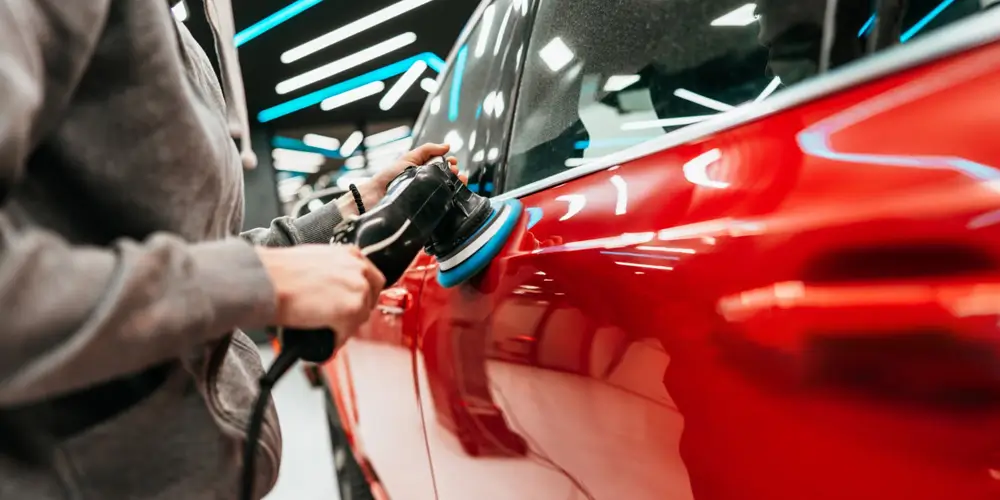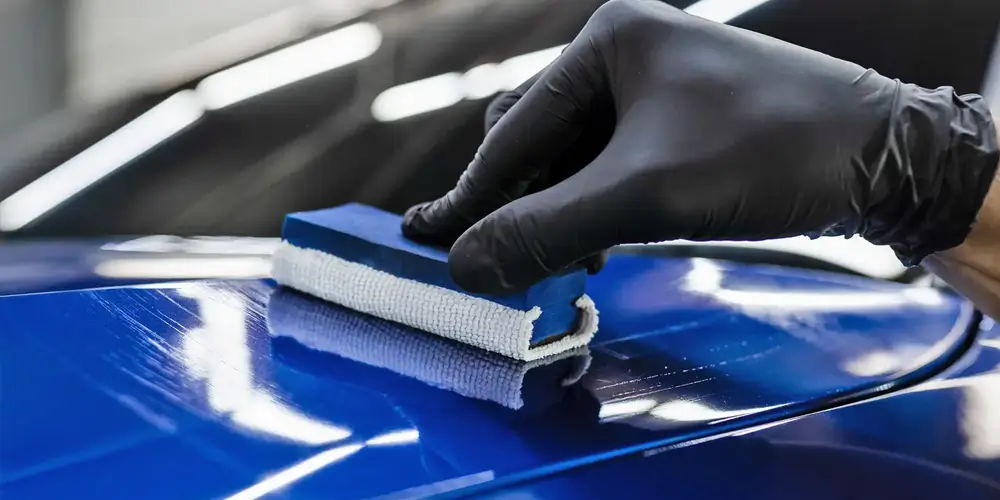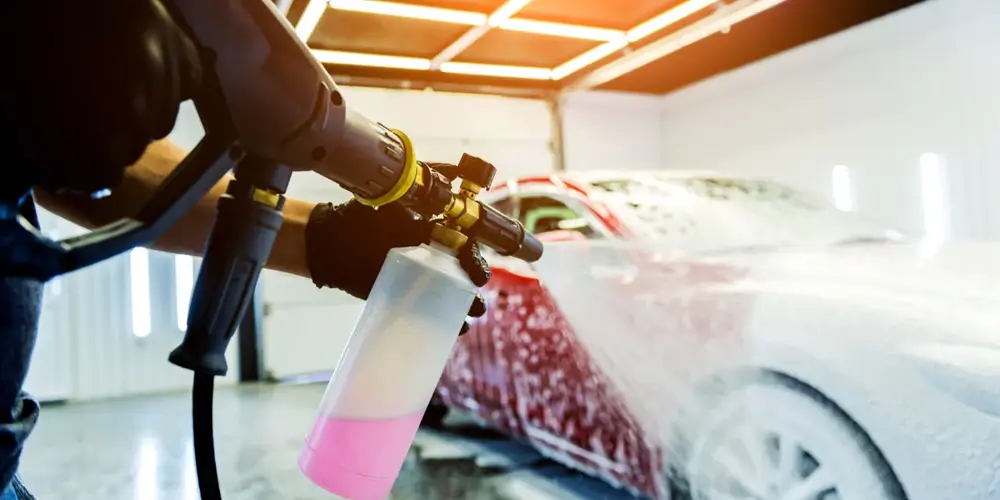Will Rubbing Compound Remove Scratches? Everything You Need to Know
If you're an automotive enthusiast, shop owner, or repair center professional, you've likely encountered customers concerned about scratches on their vehicle's paint. It's no secret that over time, cars inevitably gather imperfections—whether through environmental exposure, minor accidents, or simply the wear and tear of daily driving. One of the most common queries you may hear is: Will rubbing compound remove scratches? The answer is yes, but there are important factors to consider.
In this article, we'll delve deep into the role of rubbing compounds in automotive paint correction, the types of scratches it can address, how it works, and how to use it effectively for professional results.
Understanding Scratches: What Type Can Be Removed?
Before exploring whether rubbing compound can remove scratches, it's essential to understand that not all scratches are the same. In fact, automotive paint consists of multiple layers: a primer, a base coat (which provides the color), and a clear coat on top. The depth and severity of a scratch determine whether it can be effectively removed by rubbing compound.
Here are the main types of scratches you may encounter:
1. Surface or Clear Coat Scratches
These are light scratches that affect only the topmost layer of the vehicle’s paint, the clear coat. Clear coat scratches are often the result of minor abrasions, such as a car brush that was too stiff or fingernail marks near door handles. These types of scratches are typically shallow and can be effectively addressed with a rubbing compound.
2. Base Coat or Paint Layer Scratches
These scratches penetrate deeper, affecting the actual color layer or base coat of the paint. While rubbing compound can reduce the visibility of these scratches, complete removal may require additional touch-up paint or a more aggressive polishing approach. The rubbing compound can still make a significant difference by smoothing the edges of the scratch, making it less noticeable.
3. Primer Scratches or Deep Scratches
The deepest type of scratch is one that reaches the primer or even the bare metal of the vehicle. Rubbing compound, in this case, is unlikely to be sufficient. You would need to resort to more advanced methods like repainting and using filler material. However, the rubbing compound can still improve the overall appearance by refining the surrounding paint area, helping the repair process.
What Is Rubbing Compound and How Does It Work?
Rubbing compound, also known as cutting compound, is an abrasive paste used to restore and smooth out automotive paint by removing imperfections like oxidation, swirl marks, and, of course, scratches. Its effectiveness lies in its ability to sand down the uneven surface of the clear coat, leveling out the scratch with the surrounding paint. This process leaves a uniform, smooth surface that reflects light evenly, making scratches far less visible or completely invisible.
Rubbing compound works by physically abrading away microscopic layers of the clear coat, which is why it is critical to use it with care. Too much rubbing compound or excessive force can result in over-polishing, which could potentially remove too much of the clear coat and expose the base coat beneath.
Types of Rubbing Compounds
There are different types of rubbing compounds, varying in the coarseness of their abrasiveness. The type you choose will depend on the condition of the vehicle's paint and the severity of the scratches you are dealing with.
1. Heavy-Cut Rubbing Compound
As the name suggests, heavy-cut compounds are the most aggressive, designed to remove deep imperfections in the clear coat, including severe oxidation, swirl marks, and deeper scratches. These compounds are ideal for older vehicles or cars with heavily damaged paint.
2. Medium-Cut Rubbing Compound
A medium-cut rubbing compound provides a balance between abrasiveness and finish. It’s suitable for cars with moderate surface damage like light scratches and oxidation. This type of compound is often used as a follow-up to heavy-cut compounds to refine the surface further.
3. Light or Finishing Compound
Light compounds are used primarily for light swirl marks, water spots, and minor blemishes. These compounds are less abrasive and are often used in combination with polishing compounds to provide a high-gloss finish after scratch removal.
How to Use Rubbing Compound to Remove Scratches
Using rubbing compound to remove scratches requires skill and precision, especially if you're aiming for professional-grade results. Here’s a step-by-step guide for using a rubbing compound effectively:
1. Clean the Surface
Before applying any rubbing compound, make sure the surface is completely clean. Wash the car thoroughly with car shampoo to remove any dirt, grime, or dust. Any contaminants on the surface could lead to further scratches when rubbing the compound in.
2. Apply the Rubbing Compound
Start by applying a small amount of the rubbing compound to a microfiber cloth or foam pad. If you’re using a machine polisher, attach a foam or wool pad to the device.
3. Rub Gently
Work the compound into the scratched area using a circular motion if working by hand, or use a slow setting on the polisher. Start with light pressure, then gradually increase pressure as needed. The key here is patience; rushing this step can lead to uneven results.
4. Buff the Surface
Once you’ve applied the compound evenly, use a clean cloth to buff the area. This will help remove any excess compound and reveal the polished surface underneath. If necessary, repeat the process until the scratch is less visible or gone completely.
5. Follow Up with Polishing Compound
After using a rubbing compound, it’s important to finish the job by applying a polishing compound. Polishing compounds are less abrasive and will help restore the gloss and shine to the affected area, giving the car a finished look.
6. Wax for Protection
To protect the newly polished surface, apply a coat of car wax. This will help seal the paint and guard against future scratches, while also enhancing the overall shine.
When to Use Rubbing Compound Professionally
As a professional in the automotive industry, it's crucial to know when to use rubbing compound versus when to opt for more advanced or alternative solutions. Here are scenarios where rubbing compound is the best approach:
1. Light to Moderate Scratches
If the scratches are minor and do not penetrate the clear coat, rubbing compound will usually suffice to restore the paint.
2. Oxidized or Faded Paint
For vehicles showing signs of paint oxidation or fading due to sun exposure, rubbing compound can revitalize the surface, making it look fresher and more vibrant.
3. Surface Imperfections Before Repainting
If you're prepping a car for repainting or touching up a section of the paint, rubbing compound helps to create a smooth, clean surface that ensures optimal paint adhesion.
Precautions When Using Rubbing Compound
While rubbing compound is a highly effective solution, it does come with some risks if not used properly. Here are some precautions to keep in mind:
1. Avoid Overuse
Since rubbing compounds are abrasive, they remove a thin layer of the clear coat. Overuse can wear down the clear coat too much, exposing the base coat or primer, which can lead to further paint damage.
2. Test on a Small Area First
It’s always a good idea to test the rubbing compound on a small, inconspicuous area of the vehicle first. This way, you can gauge its effectiveness without risking damage to a more visible part of the car.
3. Use the Right Tools
Whether you’re working by hand or using a machine polisher, always use appropriate tools. Foam pads are generally better for light compounds, while wool pads are more aggressive and should be used with caution.
Conclusion: Is Rubbing Compound the Right Solution for You?
In summary, rubbing compound is a valuable tool in the automotive care and repair process, capable of removing light to moderate scratches, restoring faded paint, and prepping surfaces for further treatment. However, it’s not a one-size-fits-all solution. For deep scratches, more advanced techniques like touch-up paint or repainting may be necessary.
As an automotive import wholesaler, car detailing shop owner, or auto repair center operator, you want to provide your customers with top-tier results. At SYBON, we specialize in high-quality rubbing compounds and other automotive maintenance products that meet the demands of professionals like you.
If you're looking to elevate your business and provide superior scratch removal services, we invite you to collaborate with us. Visit our website and fill out our contact form to discuss partnership opportunities. Let’s work together to bring the best automotive care solutions to your customers.
Source of this article:https://www.sybonbest.com
Get to know us through more channels:



